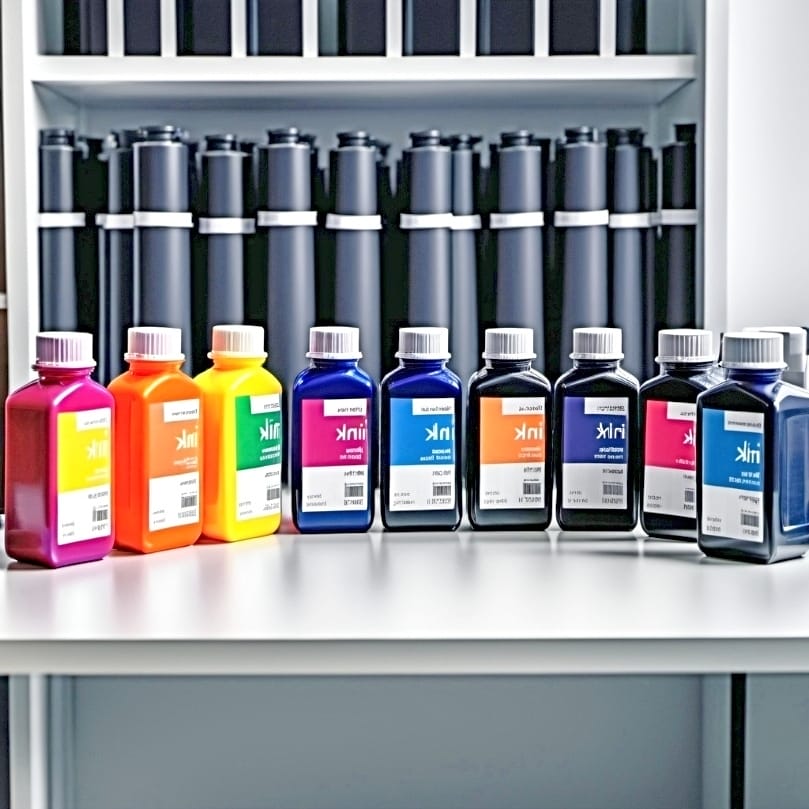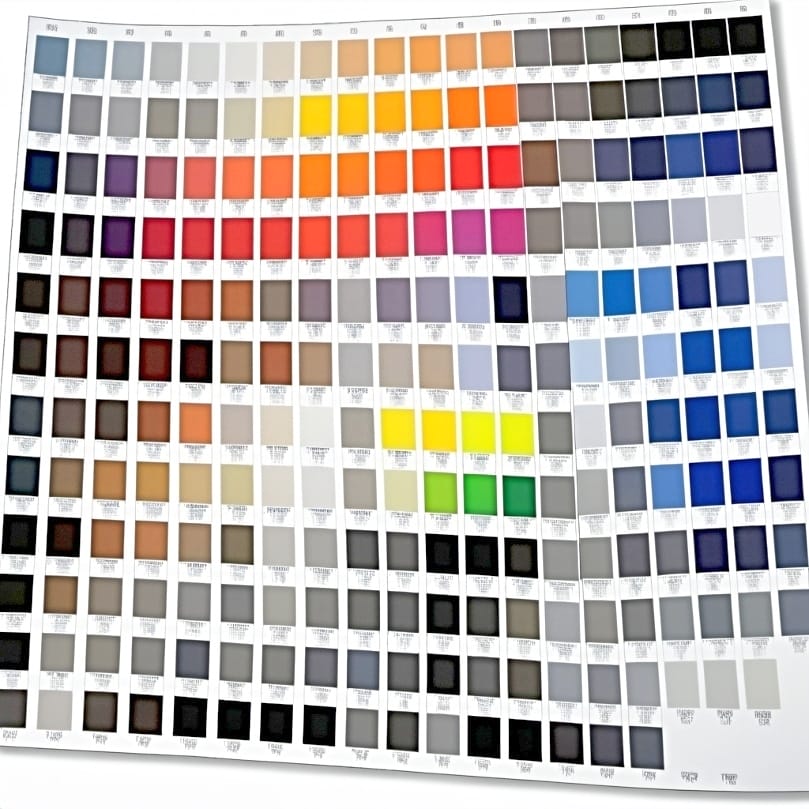Table of Contents
ToggleCurious about the difference between sublimation ink and regular ink? What is the difference between sublimation ink and regular ink you ask? Sublimation ink is uniquely formulated to bond with synthetic materials, offering vibrant, permanent prints through heat application. In contrast, regular ink is suitable for paper, providing effective printing for everyday use. Stay with us as we examine their composition, applications, and processes, helping you select the right ink for your specific printing demands!
Key Takeaways
- Sublimation ink differs from regular ink in its composition and function, transitioning from solid to gas to bond with polymers and produce vibrant, durable prints. It’s best suited for materials like polyester, ceramics, and metals.
- Regular ink, used in inkjet printers, mainly serves common printing needs on paper. Composed of oils, solvents, and pigments or dyes, it is optimized for document and photo printing but is less durable than sublimation prints.
- The choice between sublimation and regular ink should consider the printing medium, desired durability, and quality of print. Sublimation is for specialty applications and materials, while regular ink is for general paper printing.[1]
Understanding Sublimation Ink
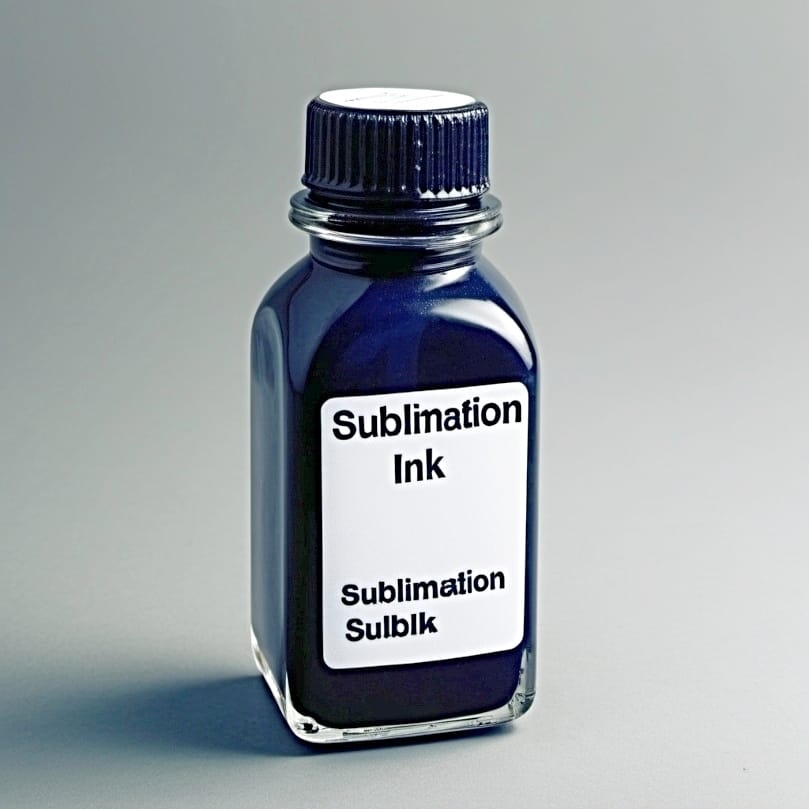
Exploring sublimation ink, we find unique characteristics that distinguish it from regular ink. Used predominantly in dye-sublimation printers, this type of ink is specifically designed to transition from a solid to a gas under high temperatures and pressure, permeating the material and resulting in vibrant colors and long-lasting prints.
Sublimation ink’s versatility shines through its wide array of applications, including:
- Sportswear production
- Promotional items creation
- Custom apparel printing
- Home decor printing
- Signage and banner printing
Its unique properties allow it to produce vibrant, full-color, high-resolution prints that are durable and resistant to fading, cracking, and peeling.
Composition and Properties
Dye sublimation ink is a blend of pigments, dyes, and a carrier fluid that facilitates the sublimation process. These elements, combined, give sublimation inks their unique ability to bond with polyester and poly-coated materials, leading to robust and long-lasting prints. You can also refer to my guide if you are wondering about how the dye sublimation process works.
⫸ Click Here For Best Selling Sublimation Printers And Products ⫷This unique composition allows the ink to bond with the material’s fibers, resulting in vibrant, durable prints as the image integrates with the material.[2]
Applications
Sublimation ink finds its use in a variety of applications, from sportswear and home décor to promotional items. Its ability to produce vibrant and long-lasting prints allows it to elevate the visual appeal of any product it’s used on, be it fabric, ceramics, or metal.
The process of applying sublimation ink to these materials involves:
- Printing the desired design on sublimation paper
- Transferring the design to the product through heat and pressure
- Resulting in a durable and vivid finish.
Understanding Regular Ink
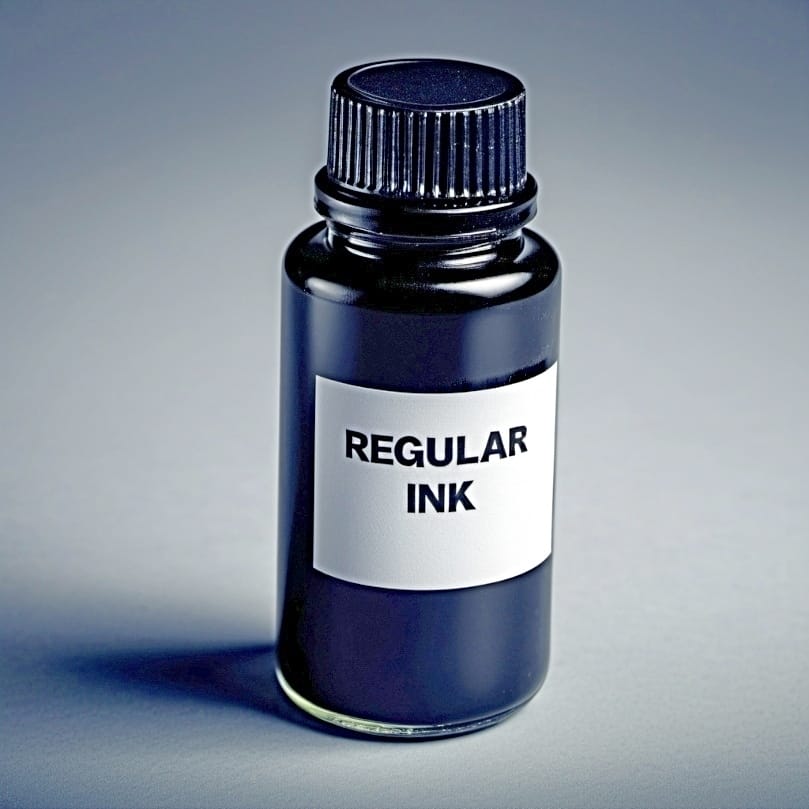
Contrary to sublimation ink which is designed for specific applications, regular ink serves as the staple for everyday printing needs in standard inkjet printers. The composition of regular ink is different from that of sublimation ink, composed of a base of linseed or soybean oil, along with additional components like varnish. It is available in two types, pigment-based and dye-based, each offering distinct advantages such as water-resistance, fade-resistance, and cost-effectiveness.
Regular ink is commonly used in various printing tasks, spanning from document and photo printing to crafting marketing materials. However, it does have its limitations, such as reduced durability compared to solvent inks, unsuitability for outdoor use, and a lower page yield compared to toner.
Composition and Properties
Regular ink is formulated with a variety of components, each contributing to its distinct properties. The constituents include:
- Solvents
- Pigments (found in pigment ink, also known as pigment inks)
- Dyes
- Resins
- Lubricants
- Solubilizers
- Surfactants
- Other additives
These ingredients play a crucial role in defining the ink’s density, fineness, transparency, gloss, light resistance, and heat resistance.
Furthermore, the properties of regular ink play a significant role in its interaction with paper, influencing the hue, glossiness, and overall print quality.
Applications
The compatibility of regular ink with numerous paper types renders it an ideal choice for a spectrum of printing needs. Whether it’s printing documents, photographs, or marketing materials, regular ink is designed to meet the demands of these diverse applications. It can be used to print on various packaging materials for consumer information and marketing purposes.
However, the use of regular ink is constrained by factors such as compatibility issues with certain materials and the risk of ink drying out if not used regularly.
The Sublimation Process
Sublimation printing refers to a process utilizing a heat press, which applies heat and pressure to transfer sublimation ink onto different surfaces. This technique is not only remarkable for its scientific ingenuity, but it also offers a unique approach to printing that results in vibrant and enduring prints.
Whether you’re printing on fabric, ceramics, or metal, sublimation printing offers numerous advantages. The prints are durable and the colors are vibrant, making it an excellent choice for various applications.
Let’s further examine the intricate details of this intriguing process.
Printing with Sublimation Ink
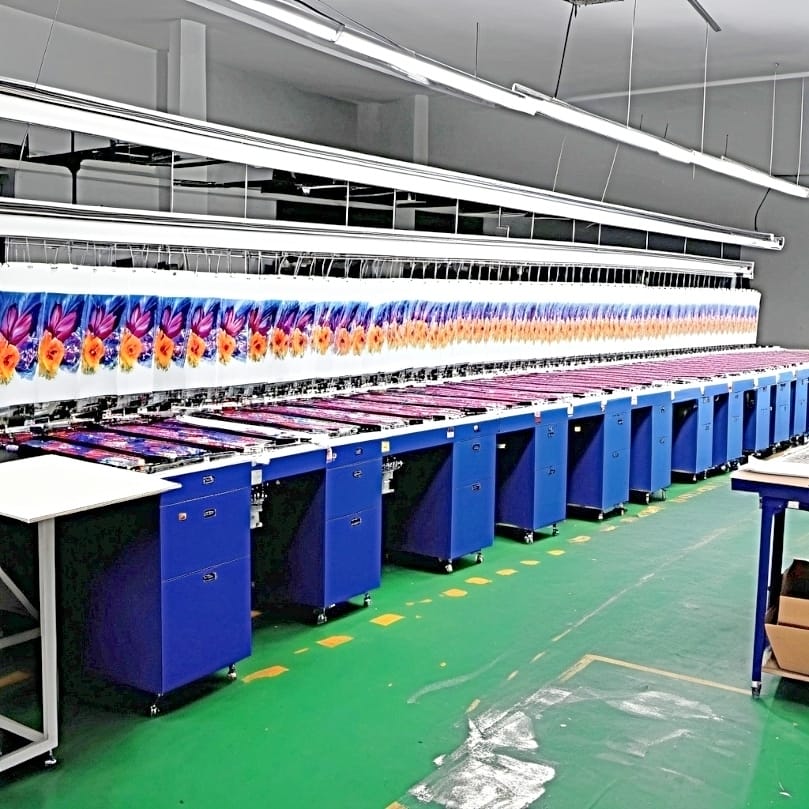
Printing with sublimation ink is a unique process that requires specialized equipment, such as a dye sublimation printer. Here’s how it works:
- Use a sublimation printer to apply the ink onto the source paper.
- Transfer the ink from the paper onto the intended material, typically polyester fabric, through the application of heat.
- The printer facilitates the preparation of the dye in a gaseous state, allowing it to penetrate the printing surface and achieve a high-quality image transfer.
Benefits of Sublimation Printing
With a multitude of benefits, sublimation printing emerges as an attractive option for various applications. The prints are vibrant and durable, and the process is compatible with a variety of materials.
Whether you’re printing sportswear, promotional items, or home décor, sublimation printing can provide the high-quality, long-lasting results you’re looking for.
The Inkjet Printing Process
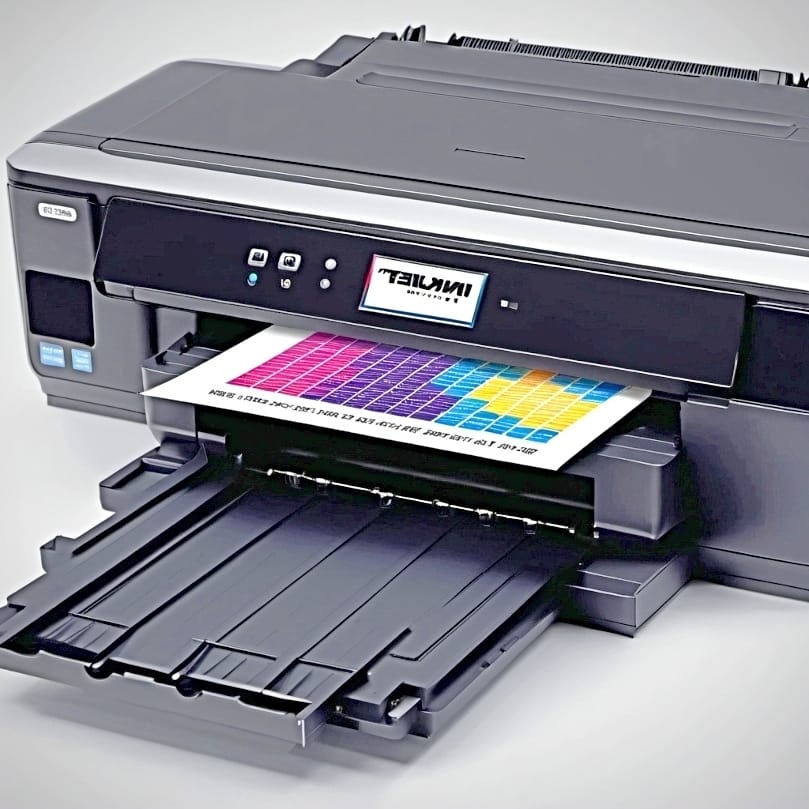
Contrarily, the inkjet printing process involves printing with regular ink to form images on paper. This process has its own set of unique characteristics and advantages, making it a popular choice for everyday printing needs.
Inkjet printers operate by propelling tiny droplets of ink onto paper to generate a fluid stroke, enabling the production of high-resolution prints on various types of paper. This method of printing is relatively straightforward and efficient, making it highly suitable for a range of common printing tasks.[3]
Printing with Regular Ink
Printing with regular ink typically involves an inkjet printer propelling tiny droplets of ink onto paper to create an image or text. This process is known for its high printing speed and excellent print quality. However, it’s essential to handle ink cartridges with care during printing and shield them from direct sunlight and extreme temperatures to maintain print quality.
Benefits of Inkjet Printing
Inkjet printing presents numerous benefits such as affordability, user-friendliness, and compatibility with a vast array of paper types. This method of printing is known for its high resolution and color accuracy, making it an excellent choice for both text documents and photos. Plus, inkjet printers are lightweight and relatively simple to maintain, making them a practical choice for both home and office use.
Comparing Sublimation Ink and Regular Ink

It’s vital to comprehend the distinctions between sublimation ink and regular ink, regardless of which one you’re considering. While they may seem similar on the surface, they have distinct compositions, exhibit different behaviors during the printing process, and are suitable for different materials.
By understanding these differences, you can make a more informed decision about which type of ink is the best fit for your specific needs. Let’s further investigate the principal differences between sublimation ink and regular ink.
Composition Differences
While both sublimation ink and dye ink play a crucial role in the printing process, their compositions are distinct. Sublimation ink comprises a dense blend of carrier fluid and solid dye particles that enables it to bond with polyester and poly-coated materials. On the other hand, dye inks are designed for a different purpose, maintaining their unique characteristics.
On the other hand, regular ink is formulated to be absorbed by paper, with its composition including solvents, pigments, dyes, and other additives.
Printing Process Differences
The printing processes for sublimation ink and regular ink also differ significantly. Sublimation printing requires heat and pressure to transfer the ink onto various surfaces. In contrast, inkjet printing uses ink droplets to create images on paper.
These divergent processes reflect the unique characteristics and applications of each type of ink.
Application Differences
When it comes to applications, sublimation ink and regular ink each have their strengths. Sublimation ink is ideal for printing on various materials like fabric, ceramics, and metal. Regular ink, however, is best suited for paper-based printing applications.
Thus, the choice between sublimation ink and regular ink will largely depend on the material you intend to print on and the durability of the print you desire.
Choosing the Right Ink for Your Needs

Choosing the right ink for your needs can be a challenging task, given the variety of options available. However, by understanding the fundamental differences between sublimation ink and regular ink, you can make an informed decision that best suits your specific requirements.
Let’s explore some of the factors and tips to consider when choosing between sublimation ink and regular ink to ensure you select the best ink for your printing needs.[4]
Factors to Consider
Several factors need consideration when deciding between sublimation ink and regular ink. These include:
- The type of material you’ll be printing on
- The desired print quality and durability
- The printing process you’ll be using
- Your budget
For instance, if you’re printing on polyester or other synthetic materials, sublimation ink may be the better choice. On the other hand, if you’re primarily printing on paper, regular ink might be your best bet.
Tips for Making the Right Choice
To make the right choice, start by evaluating your printing needs. Consider the material you’ll be printing on, the desired print quality, and your budget. Research different ink types and their respective advantages and disadvantages. Consult with experts or suppliers to get professional advice.
Ultimately, remember that the ideal ink for you is the one that fulfills your specific needs and expectations.
Summary
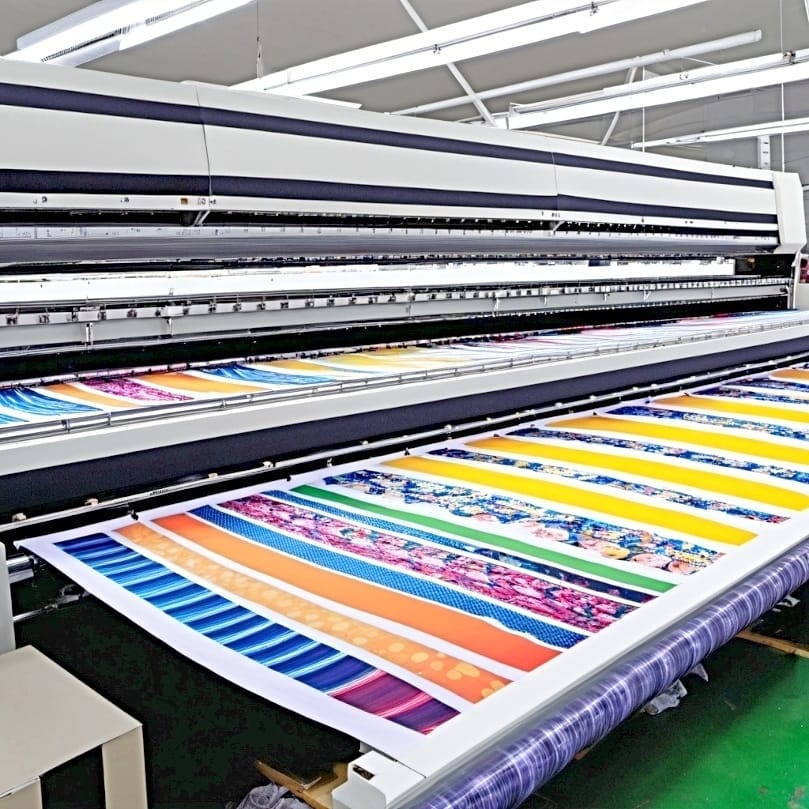
As we’ve explored, both sublimation ink and regular ink have their unique properties, applications, and benefits. While sublimation ink is best for printing on polyester and poly-coated materials, regular ink is ideally suited for paper-based applications. The choice between the two largely depends on your specific printing needs, the material you’re printing on, and your budget.
Whether you’re a professional printer or a hobbyist, understanding the differences between sublimation ink and regular ink can help you make an informed decision and achieve the best possible results. So, the next time you’re faced with a printing project, remember these tips and choose the right ink for your needs!
Frequently Asked Questions
Can you use regular ink for sublimation?
No, regular ink cannot be used for sublimation. You need sublimation ink specifically designed for sublimation heat transfer printing.
Can I use my inkjet printer for sublimation?
No, inkjet printers with a thermal printing head, such as Canon, HP, Lexmark, or Dell, cannot be used for sublimation printing. Printers with a Micro Piezo printing head are suitable for sublimation printing.
Can you use sublimation ink on any material?
Sublimation ink is best used on synthetic fabrics like polyester, nylon, and spandex for the best results. Other materials may not yield optimal results.
What is the main difference between sublimation ink and regular ink?
The main difference between sublimation ink and regular ink is their compatibility with different materials – sublimation ink is designed for polyester and poly-coated materials, while regular ink is designed for paper absorption.
What materials are suitable for sublimation ink and regular ink?
Sublimation ink is best for polyester fabrics, ceramics, and metals, while regular ink is suitable for printing on different types of paper. Choose the ink based on the material you want to print on. Learn more about the best percentage of polyester for sublimation here.
References
- Tech News And Updates. (2023, December 28). Sublimation Ink market: anticipated to be the sector with the fastest growth in 2031. https://www.linkedin.com/pulse/sublimation-ink-market-anticipated-sector-fastest-ytfee/
- PubChem. (n.d.). Solvent-based dye sublimation ink composition – Patent US-8263682-B1 – PubChem. PubChem. https://pubchem.ncbi.nlm.nih.gov/patent/US-8263682-B1
- How does a Printer work? | How do I connect my PC to my Printer? | Lenovo US. (n.d.). https://www.lenovo.com/us/en/glossary/how-does-a-printer-work/?orgRef=https%253A%252F%252Fwww.google.ca%252F
- Booth, H. V. (2023, June 5). Which Ink Reigns Supreme? Inkjet vs. Dye-Sublimation for Large Format Printing. HP Large Format Printers & Plotters PH. https://largeformat.hp.com/ph/blog/which-ink-reigns-supreme-inkjet-vs-dye-sublimation-for-large-format-printing

